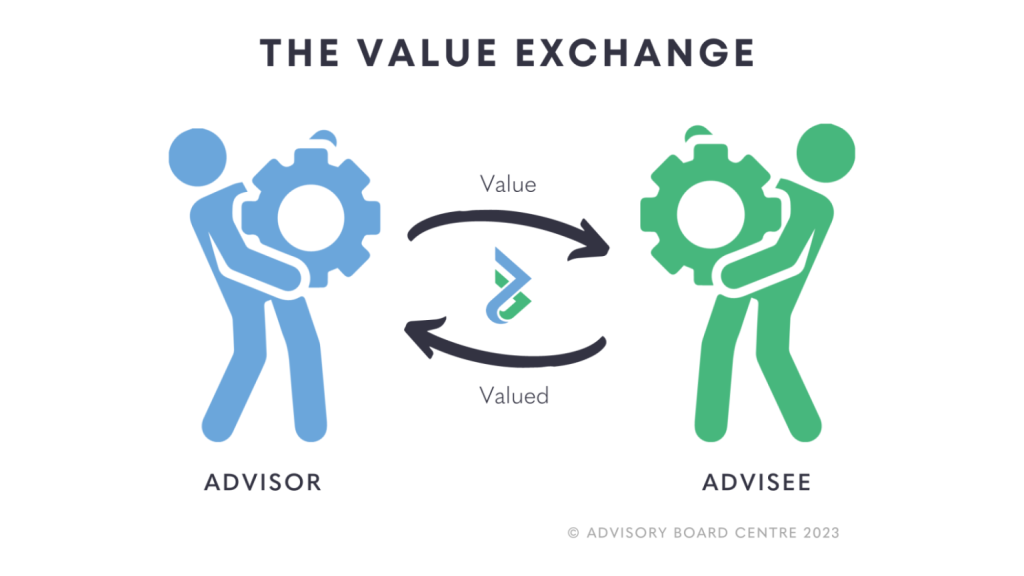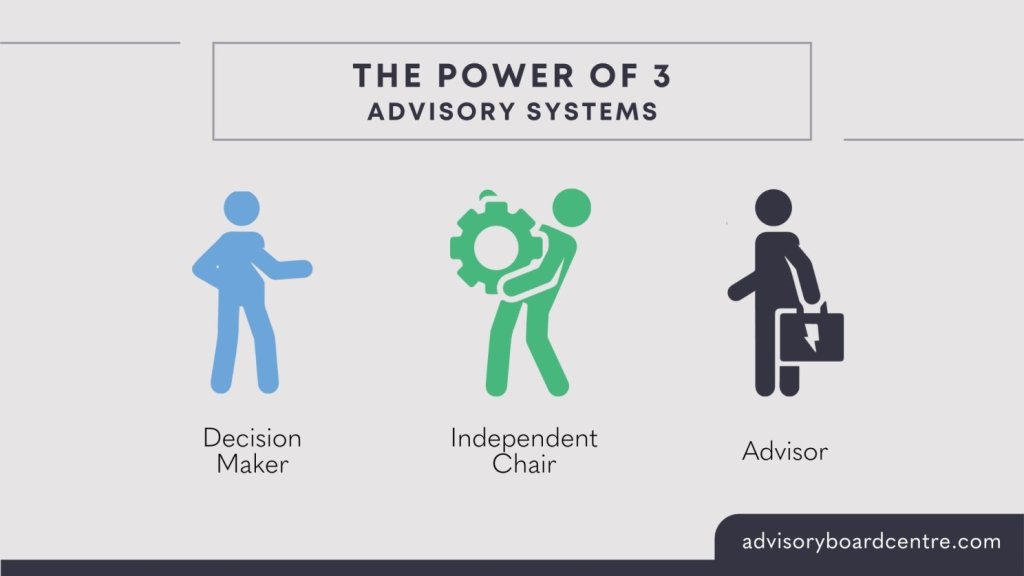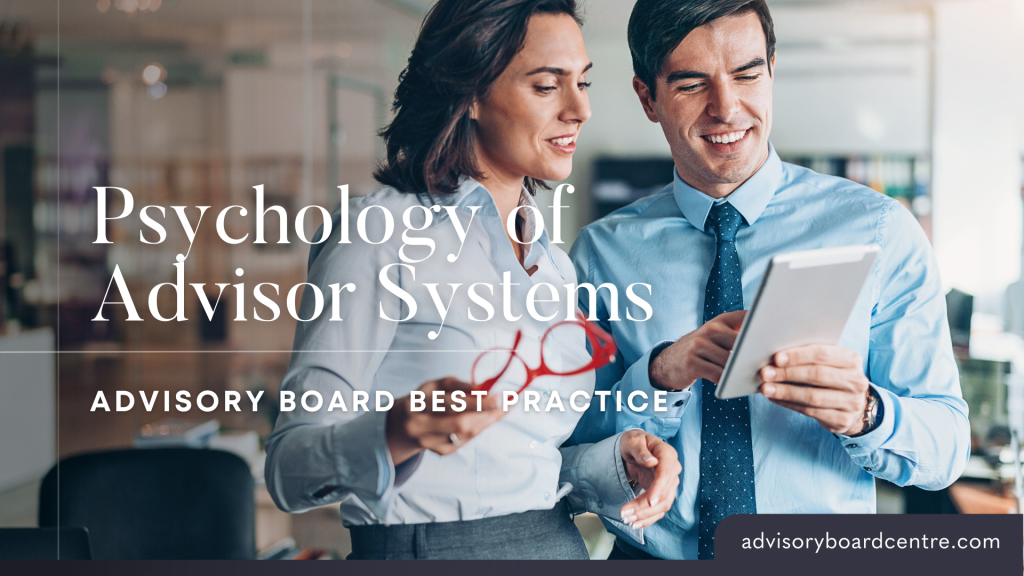As the global stewards of advisory board best practice, we collaborate equally with advisory board professionals, organisations and leading academics globally in the study of governance constraint, advisory boards effectiveness, adaptation of thinking systems and understanding business growth. The objective is to address the realisation of ‘Growth Potential and Good Governance’.
From my personal experience as an entrepreneur, Executive and Certified Chair™, I know that meaningful advice at the right time can change people’s lives. It did for me.
Reflecting on the moments where advice was given (the advisor) and how I received it (the advisee) provides me with a small insight into what I term “the value exchange.”
What is The Value Exchange?
Advice is meaningful when two things occur:
1) the exchange creates new value, and
2) the advice is valued.
Both parties trust the exchange, which leads to an increase in confidence in the advice. Understanding the dynamics within the moment of the value exchange between the advisor and advisee is a complex task, because there is a lot going on!

The Limitations of “On-Demand” Advice
Picture this: you arrive at a meeting, are provided a broad synopsis of an issue and the advisee expects you to have a solution on the spot.
Is this realistic? Definitely not. Is it common? Absolutely.
The advisor, in trying to help (add value), falls into the trap of the “advisor’s curse”: trying to be the smartest person in the room and fix the problem on-demand.
The issue is likely to be complicated, has layers the advisor cannot see, and it is likely wrapped in emotions. Providing a quick, off the cuff response is akin to an advice sugar hit. It feels great in the moment but a crash is inevitable. A quick fix is provided but the underlying issue is not explored and ultimately solved.
So how do you break the curse and move off the advice rollercoaster into a true value exchange? The first step is to reframe expectations on both sides from on-demand “fixing” to collaborative advising.
Skilled advising has been described this way: It is more than the dispensing and accepting of wisdom; it’s a creative, collaborative process – a matter of striving, on both sides, to better understand problems and craft promising paths forward.
In other words, it is a Thinking System.
When the value exchange is performed well, both advisor and advisee benefit where better solutions are created together than either party could have created alone. This can only occur when the advice relationship is underpinned by trust. When the advice shifts from a one-to-one engagement into a thinking system, it elevates the trust in advice.
Thinking Systems to Support Value Exchange
Identifying the situation (the why) informs the type of advice structure required (the what). Within an advisory structures there are two common systems for advice.
When a problem or situation requires specific expertise and recommendations from a knowledge source – logically it is an Expert System. The Advisee seeks out an expert for a specific recommendation or direction. This is most commonly a 1:1 exchange.
However, the thinking system required in an environment where there is no single correct answer is quite different. Advisor Systems provide the space for optionality to occur, supported by exploratory debates and robust conversations. The purpose is to build visibility of alternatives and confidence in choice when there are various options to consider.
Advisory boards are the most common advisor system where members provide independent advice in a forum that stimulates debate with the aim of informing better decision making. Research reinforces the link between an advisee gaining independent advice from multiple sources and quality decision making.
At its core, the purpose of any advisory system is to build the confidence of the advisee in the decisions they make. Confident decision makers consider:
- the available information,
- the advice received and
- their own ability to execute.
Creating an environment of active exploration and robust discussion of options is important in an advisory board setting.
The Advisory Board Centre Global Research Council identified that accessing an advisor system like an advisory board enhances business owners’ confidence by over 30%.
The Power of 3
Within the Value Exchange, when advice is compounded from three independent sources, greater benefits are gained. It is what we call “the power of 3”.
The diversity of insights and contribution to exploring options creates an accuracy gain that can shift a satisfactory decision to an optimal one.
Most best practice advisory boards start with a powerful combination of three independent sources of information – the chair and two advisors.
Within a best practice advisory board, there are no idle passengers, and everyone has a role in building confidence to create value.
The Advisor – The structure of the role of advisors in an advisory board system is very different to a one-to-one engagement. An advisor not only draws on their own knowledge and experience, they also have to consider the purpose, group dynamics, other people’s points of view, layered problem solving and personal bias. Advisors must elevate the conversation from closed recommendations of what a business “should” do, to exploring the optionality of what a business “could” do.
The Chair – For the chair, managing internal representatives and external advisors at the same time, requires skills and insight in such a dynamic environment because anything could happen. A high quality chair helps articulate the expectations of the advisee as well as promoting diverse thinking, healthy debate, respect and valuable contribution from the advisors. Knowing how to manage expectations and the conversation models that drive the agenda keeps the thinking system focused. Chairs who can adeptly facilitate conversations from generalist to specialist amplify the value generated in an advisory board.
The Decision Maker – The decision makers in the advisory board context are the internal representative or sponsor. They have to consider their own opinions and deal with personal bias when evaluating an advisor’s point of view. Decision makers must consider their own ability to take on the advice provided, make a decision and lead the execution phase within their organisation.

Best Practice Foundations
The most dynamic aspect of the Value Exchange when done well is the concept of regenerative value – with each conversation building on the next to continue to build new value. Without the right foundations in place the exchange is broken, and the potential value is unrealised.
The ABF101 Advisory Board Best Practice Framework has an important role to play. Advisor systems, when applying best practice principles, amplify the value exchange and in turn, confidence in the way decisions are made.







